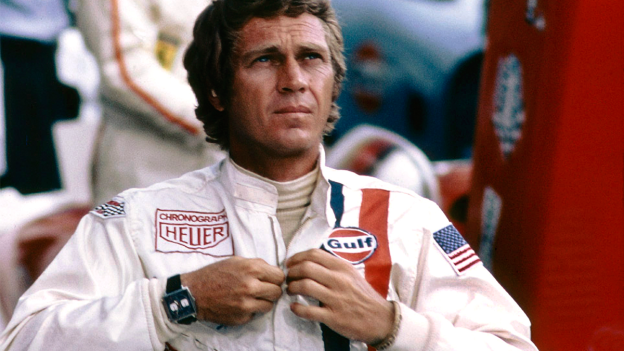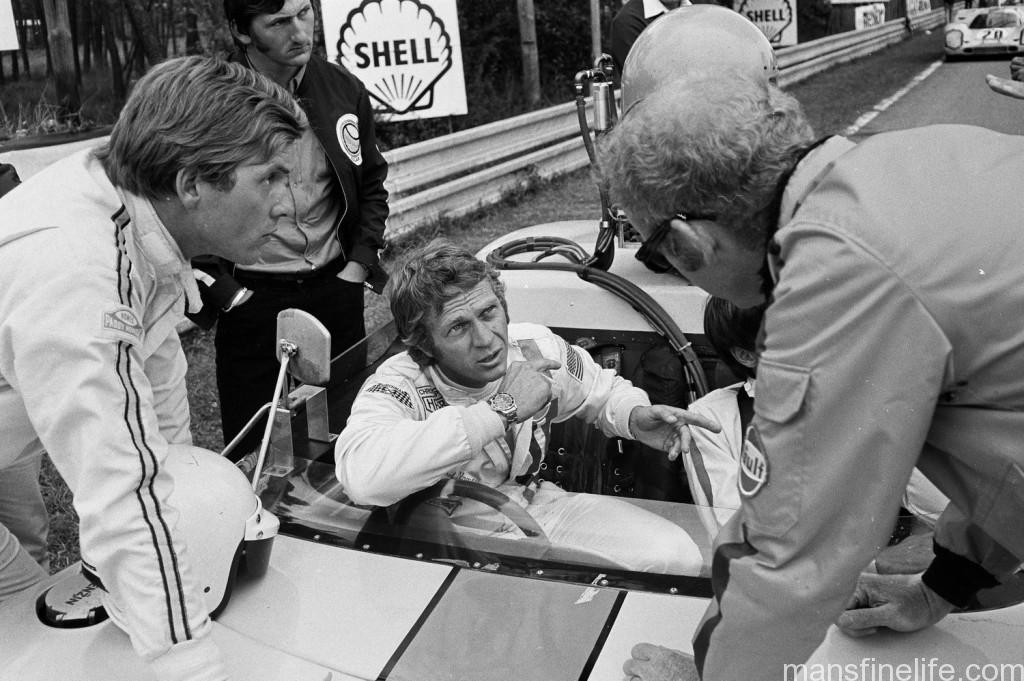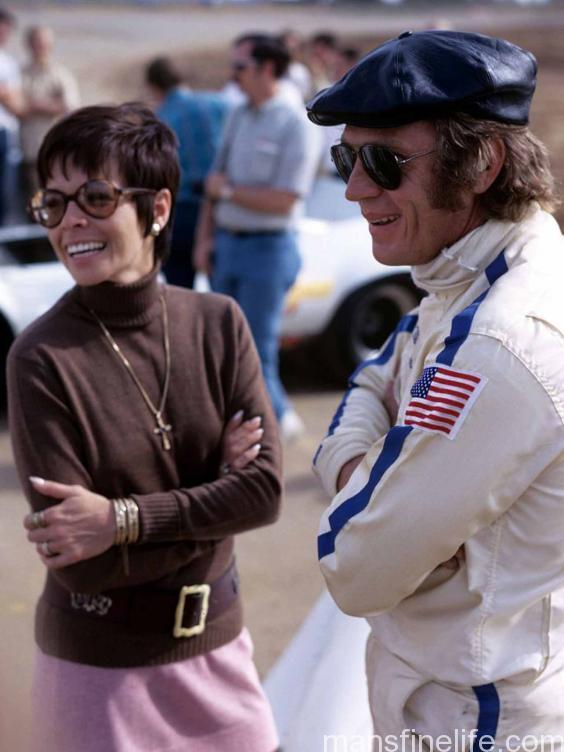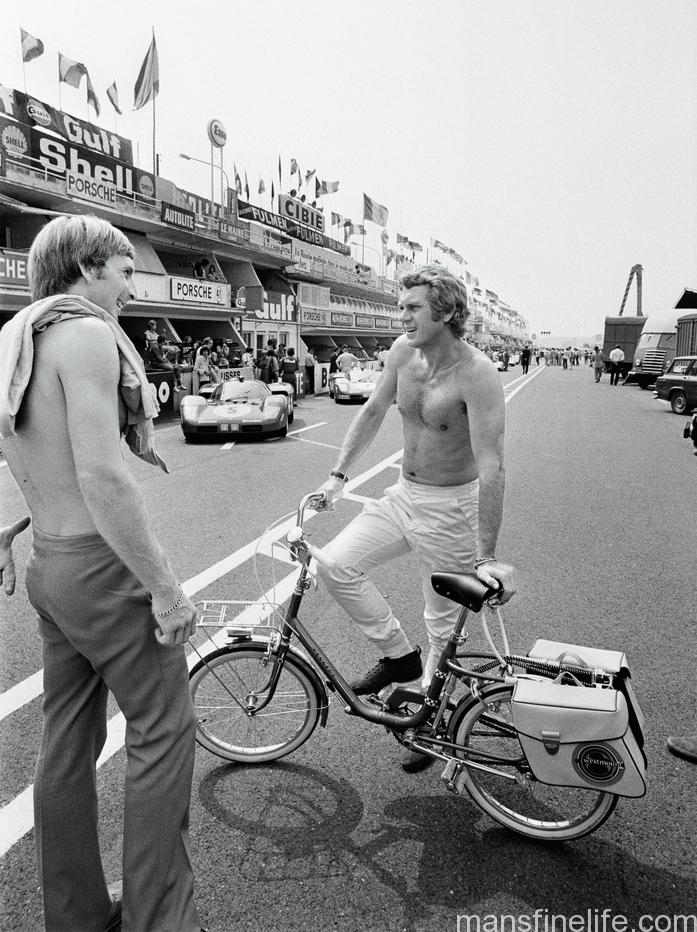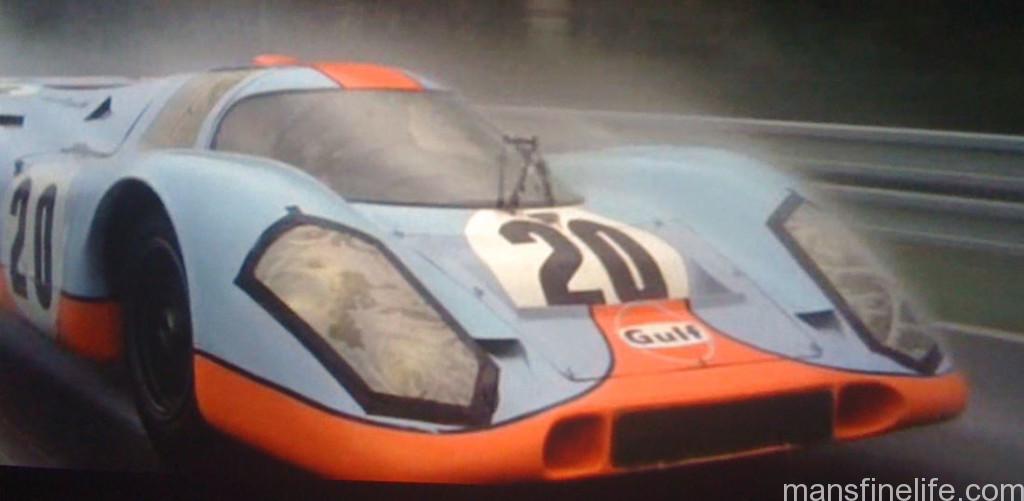(This article was co-written with tomvox1, who helped fill in the biographical blanks of McQueen’s Hollywood career)
Legendary screen icon Steve McQueen was not only one of his generation’s most interesting and successful actors but he was also a serious motorsports addict. An accomplished racer on both two wheels and four, McQueen began spending lavishly on racing machines just as soon as he started making money as an actor after his discharge from the Marines, where he had even attempted to soup up his squad’s tank. Tearing around Greenwich Village in a wire-spoked 1950s MG, he graduated to ever more exotic fare upon moving to California and hitting the big time with his starring role on the Western TV series, Wanted: Dead or Alive. As well as means, McQueen had exquisite automotive taste and would come to be identified with some of the most remarkable cars of the second half of the 20th Century: the 1958 Porsche Speedster, the stunning Jaguar XK-SS, the 1963 Ferrari 250 Lusso and, perhaps most famously, his personal gunmetal gray 1969 Porsche 911S and the Highland Green ’68 Mustang GT fastback from Bullitt.
Throughout the 1960s, running parallel to his rise as a Hollywood superstar, McQueen honed his craft as an expert racer. While truly gifted on a dirt bike, the King of Cool worked hard to become one of the top amateur sports car drivers in the US. In fact, despite being hampered by a broken foot in a cast, McQueen and co-driver Peter Revson drove their Porsche 908 Spyder prototype to an impressive second overall at the 12 Hours of Sebring in 1970, and first in the P2 class. After a gritty and inspired run, McQueen and Revson only missed out on the overall win when Ferrari drafted the great Mario Andretti into their second car as the laps wound down. It was the pinnacle of McQueen’s racing career but it was almost incidental to the real reason for purchasing the 908 in the first place: he was bound and determined to make the greatest racing movie of all time.
And that’s where the excellent documentary, Steve McQueen: The Man and Le Mans, picks up the story. In exhaustively researched detail, the film, a 2015 Cannes official selection, delves into how McQueen put the full force of his stardom and clout behind making his racing epic for good and for ill. Grabbing hold of a project originally titled “Day of the Champion” but now renamed simply “Le Mans,” his vision was to capture as realistically as possible the thrills he himself was experiencing in the cockpit of a high performance race car. And as the title now suggested, the indispensable backdrop for all of the action would be the greatest race of them all, the world famous 24 Hours of Le Mans. With a cast full of real-life professional road racers and innovative filming techniques, including converting the Sebring Porsche 908 into a 150 mph camera car, the aim was to mix actual race footage with realistic recreations executed at speed by top pros along with McQueen driving a Gulf-liveried Porsche 917 as the movie’s protagonist, Michael Delaney.
But despite the dedication and advanced technology brought to bear for the driving sequences and McQueen’s personal desire to eclipse John Frakenheimer’s 1966 Formula 1 epic, Grand Prix, as the the greatest racing movie of all time, production of Le Mans was star crossed from the get-go. Filming began under the firm hand of veteran John Sturges, McQueen’s director for the ultra-succesful 1960s films, The Magnificent Seven and The Great Escape. But the two long-time collaborators fell out over creative differences on the film and Sturges quit with the famous final words “I’m too rich and too old for this.” Sturges was desperate for a filmable story arc while McQueen was obsessing over the race action. In the end, even with new director Lee Katzin and a team of writers working overtime to right the ship, Le Mans barely managed a coherent script with anything resembling three dimensional human characters. If you weren’t a total gearhead, chances are the movie would bore you silly, Unfortunately for McQueen and all involved, that’s pretty much how the critical reception would pan out.
Even more significantly, the making of Le Mans coincided with the decision of McQueen and his first wife, Neile Adams, to divorce. Despite having their son Chad and daughter Terry along with them in France for the shoot, the McQueens were well and truly on the rocks by 1970 with Steve’s serial philandering and increasingly erratic drug-fueled behavior accelerating their 16-year union’s bitter end. So a chaotic movie shoot of the most personally important project of McQueen’s professional life dovetailed horribly with the end of his first marriage. As if to confirm the albatross-like nature of the project, British driver David Piper even lost a leg in a high speed crash while filming.
In the end, the film Le Mans was a box office bomb. To keep production going, McQueen had to cede much of his producer’s power and also sacrifice the financing of his highly successful Solar Productions at the altar of this troubled film. McQueen would obviously recover but he would never again be as powerful in Hollywood despite subsequently bringing his megawatt stardom to great movies like The Getaway, The Towering Inferno and Tom Horn. The whole fraught experience even had the unfortunate effect of cooling McQueen’s ardor towards motor racing. He would continue to compete in motorbike races and collect beautiful automobiles but it was as if the tribulations of Le Mans had turned him off completely from sports car racing. He never really pursued serious competitive driving again.
Yet if the movie is not great cinema, it does succeed as an especially vivid record of a particular time and era in racing and a singularly exciting one: the dawn of Porsche’s dominance in the 1970s. To paraphrase the legendary Derek Bell in the documentary, who himself was badly burned during shooting, Le Mans may not be a great movie but it did turn out to be an excellent semi-documentary. It unfolds in chronological fashion so you really get the feeling of experinecing a happening-like 24-hour race amongst the throngs of humanity camping around the circuit and in the stands; the drivers’ strange breaks for food and rest during the night hours as their teammates put in their stint; the ebb and flow of the race as day turns to night and back to day again; the fantastic colors, shapes and sounds of these powerful cars; and the inherent danger lurking down every blindingly fast straight and around every treacherous corner of the famed 8.5-mile Circuit de la Sarthe. When you watch the remarkable racing sequences and remember that they were shot on film in purely analog fashion during the actual 24 Hours then spliced with a choreographed phalanx of skilled drivers hitting their marks at near-race speeds the heart still pumps with excitement. The use of innovative cameras and angles and the daring required to deploy them effectively leads to some extremely immersive scenes and insure that, for the serious vintage motorsport enthusiast, Le Mans remains a must watch.
And so is the fine documentary The Man & Le Mans. Even if you couldn’t care a fig about racing, the film uncovers so many twists and turns of fate that the drama behind the scenes is a rival to anything that ended up on screen. The surviving cast of characters is lively and entertaining and full of passion, especially the drivers, Steve’s widow, the exceptional Neile, and his ribald and colorful son, Chad McQueen, who followed his father’s racing passion and was nearly killed pursuing it. The men and women who originally worked on Le Mans harken back to a more daring and exciting time, where the risks one took to get the job done would seem insane to us now, not least the leading man doing much of his own driving at 200+ mph. Despite Le Mans being a famous failure one has to respect the sheer effort it took to make the picture and the anecdotes associated with its production are both riotously funny and intensely poignant. Most of all there is the magnificent obsession of McQueen himself, seen and heard big as life through newly unearthed archival footage and recordings, as he is driven to make the greatest motor racing picture of all time and consumed by his overwhelming need to prove that he was more than just some “candy ass actor.” In the end, he more than proved that he could compete with some of the best racers of his or any other era and also pay these extraordinary sportsmen proper tribute through his commitment to filming their profession with integrity. But the cost to his personal and professional life turned out to be immeasurable. It is a testament to Steve McQueen: The Man & Le Mans that we gain a new perspective on the great actor and this pivotal turning point in his all-too-brief but utterly extraordinary life. Do yourself a favor and rent or buy it tonight. In its possibly unique marriage of Hollywood biography and motorsport chronicle, it is one of the better and more intriguing documentaries to come down the pike at any speed.

